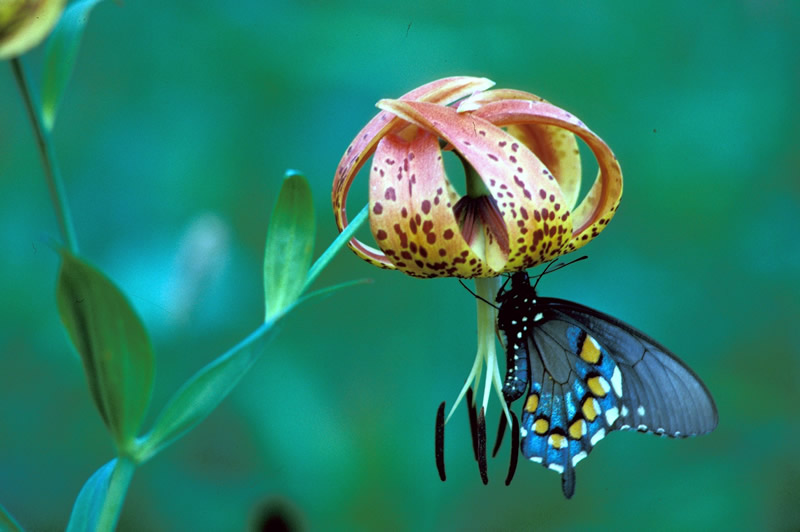Pollinator Syndromes

Plants and pollinators have co-evolved physical characteristics that make them more likely to interact successfully. The plants benefit from attracting a particular type of pollinator to its flower, ensuring that its pollen will be carried to another flower of the same species and hopefully resulting in successful reproduction.
The pollinator benefits from its adaptation to a particular flower type by ensuring that it will be able to find and access important food resources - nectar and pollen. Such relationships are considered mutualistic.
Animals, wind, and water can all be vectors for pollen. The flower type, shape, color, odor, nectar, and structure vary by the type of pollinator that visits them. Such characteristics are considered pollination syndromes and can be used to predict the type of pollinator that will aid the flower in successful reproduction.
Use the pollinator syndrome table to help you identify the potential pollinators you may associate with different flower types.
Pollinator Syndrome Traits
| Trait | Bats | Bees | Beetles | Birds |
|---|---|---|---|---|
| Color | Dull white, green or purple | Bright white, yellow, blue, or UV | Dull white or green | Scarlet, orange, red or white |
| Nectar Guides | Absent | Present | Absent | Absent |
| Odor | Strong musty; emitted at night | Fresh, mild, pleasant | None to strongly fruity or fetid | None |
| Nectar | Abundant; somewhat hidden | Usually present | Sometimes present; not hidden | Ample; deeply hidden |
| Pollen | Ample | Limited; often sticky and scented | Ample | Modest |
| Flower Shape | Regular; bowl shaped - closed during day | Shallow; have landing platform; tubular | Large bowl-like, Magnolia | Large funnel like; cups, strong perch support |
Pollinator Syndrome Traits
| Trait | Butterflies | Flies | Moths | Wind |
|---|---|---|---|---|
| Color | Bright, including red and purple | Pale and dull to dark brown or purple; flecked with translucent patches | Pale and dull red, purple, pink or white | Dull green, brown, or colorless; petals absent or reduced |
| Nectar Guides | Present | Absent | Absent | Absent |
| Odor | Faint but fresh | Putrid | Strong sweet; emitted at night | None |
| Nectar | Ample; deeply hidden | Usually absent | Ample; deeply hidden | None |
| Pollen | Limited | Modest in amount | Limited | Abundant; small, smooth, and not sticky |
| Flower Shape | Narrow tube with spur; wide landing pad | Shallow; funnel like or complex and trap-like | Regular; tubular without a lip | Regular: small and stigmas exerted |
For More Information
